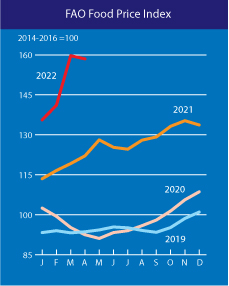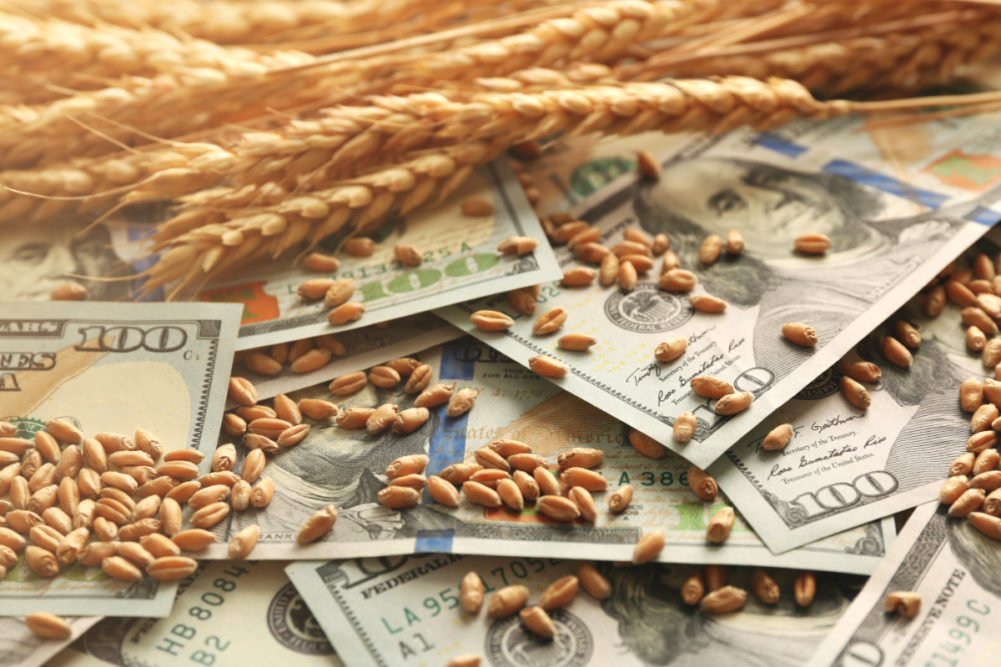ROME, ITALY — World food commodity prices decreased in April after a large jump the previous month, led by modest declines in the prices of vegetable oils and cereals, the Food and Agriculture Organization of the United Nations (FAO) said on May 9.
The FAO Food Price Index averaged 158.5 points in April 2022, down 0.8% from the all-time high reached in March. The Index, which tracks monthly changes in the international prices of a basket of commonly traded food commodities, remained 29.8% higher than in April 2021.
The FAO Vegetable Oil Price Index decreased by 5.7% in April, shedding almost a third of the increase registered in March, as demand rationing pushed down prices for palm, sunflower and soy oils. Uncertainties about export availabilities out of Indonesia, the world’s leading palm oil exporter, contained further declines in international prices.

“The small decrease in the index is a welcome relief, particularly for low-income food-deficit countries, but still food prices remain close to their recent highs, reflecting persistent market tightness and posing a challenge to global food security for the most vulnerable,” said Máximo Torero Cullen, chief economist at the FAO.
The FAO Cereal Price Index declined by 0.7 points in April, nudged down by a 3% decline in world maize prices. International wheat prices, strongly affected by continued blockage of ports in Ukraine and concerns over crop conditions in the United States but tempered by larger shipments from India and higher-than-expected exports from the Russian Federation, increased by 0.2%.
International rice prices increased by 2.3% from their March levels, buoyed by strong demand from China and the Near East.
World sorghum prices declined in April by 0.4%, while tight supplies pushed barley prices up by 2.5%.
The FAO Meat Price Index increased by 2.2% from the previous month, setting a new record high, as prices rose for poultry, pig and bovine meat. Poultry meat prices were affected by disruptions to exports from Ukraine and rising avian influenza outbreaks in the Northern hemisphere. By contrast, bovine meat prices averaged marginally lower.






